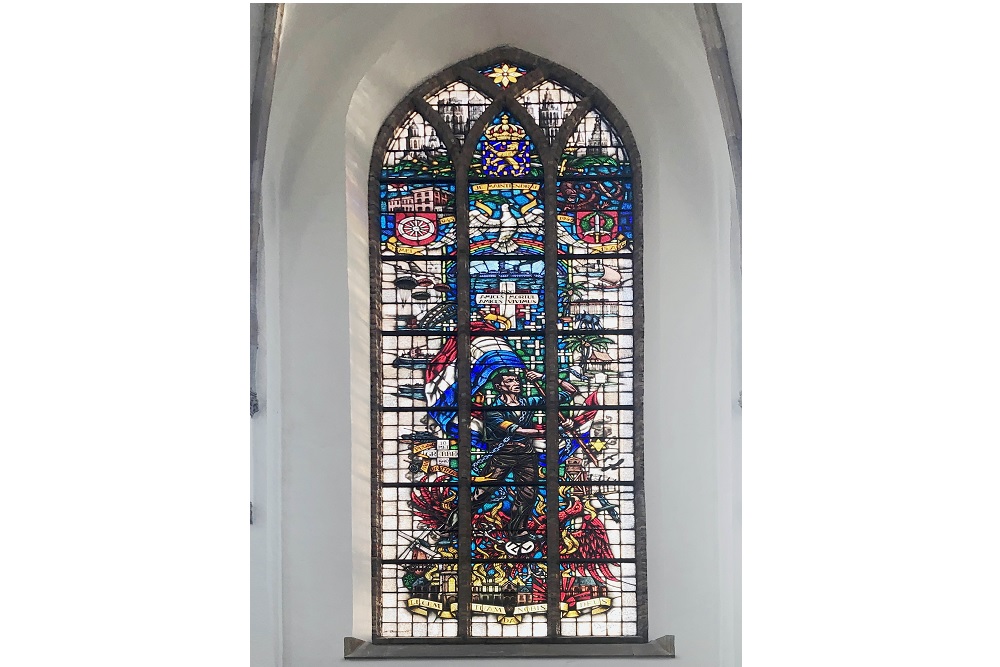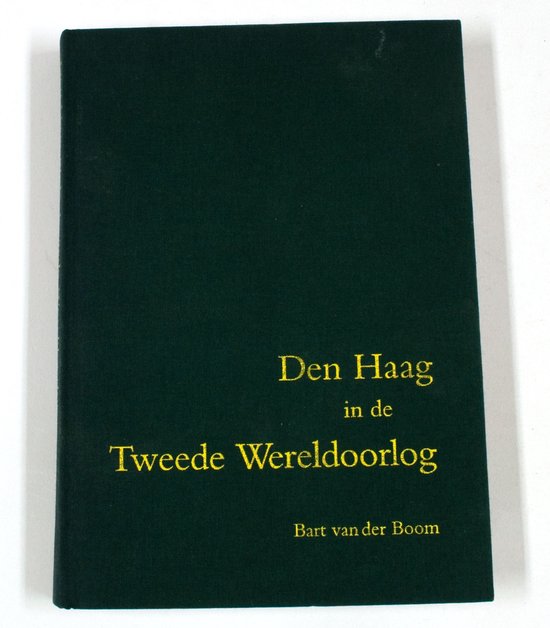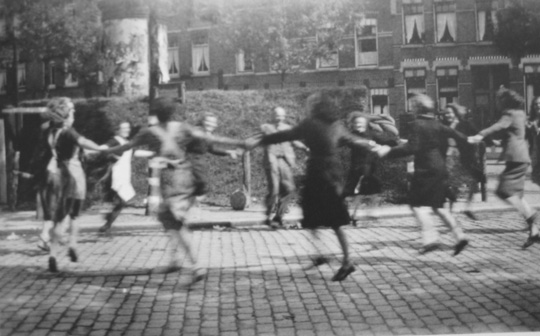Memorial Window Liberation 1940-1945
At the back of the church is the Liberation Memorial Window 1940-1945. On May 5, 1945, the capitulation was signed in Hotel De Wereld in Wageningen. In his memory, a National Liberation Window was designed by Jhr. O.E.C.M.I. Octave from Nispen to Pannerden. It was unveiled on May 5, 1987 by the then Queen Beatrix.
At the bottom of the window you can see the Grote Kerk on fire, as a symbol for the violence of war throughout the Netherlands and the world. Above it stands a man breaking the chains of the occupation. He tramples on the swastika and the German eagle. The Star of David on the right is a reminder of the persecution of Dutch Jews.
At the very bottom is a banderole with the Latin text "Lucem Tuam da nobis Deus" (Light that may be everyone's share, also spiritually.). Above it is a Dutch city on fire.
The scene on the right side of the man refers to the battle of the Grebbeberg (1940) and the evacuation of the Wageningers by Rhine barges. On the other side are symbols that refer to the persecution of the Jews (with the yellow Star of David) and the battle in the Dutch East Indies (with the bridge over the River Kwai).
Above his head is a memorial cemetery with a large cross with the Latin text "Pro amices mortui, amices vivimus" (We live on in the hearts of the friends for whom we died). This text is also applied to the monument at the Groesbeek Canadian War Cemetery.
Above that a rainbow with the peace dove in the center. Coats of arms are placed on either side of the pigeon, on the left the coat of arms of Wageningen and on the right the coat of arms of Batavia. Above the dove the national coat of arms. In the upper part of the window you can see from left to right the church towers of Oosterbeek, Rhenen, Wageningen, Roermond, Rotterdam, Arnhem, Groningen, Middelburg, Wouw, Groesbeek and Nijmegen. An eight-pointed star is placed at the very top.
Do you have more information about this location? Inform us!
Source
- Text: Stichting Grote Kerk Wageningen
- Photos: Peter Schipper
Related books
Nearby
Museum
- The Liberation Hall Museum "De Casteelse Poort" Wageningen - Wageningen
- Visitor Center And Museum Dutch War Cemetery Grebbeberg - Rhenen
- Betuws War Museum "The Island" 1944-1945 - Heteren
Point of interest
- Hotel De Wereld (Hotel the World) Wageningen - Wageningen
- Noda Farmhouse Rhenen - Rhenen
- Information Sign Evert Wilhelmus Hoksbergen - Randwijk
Monument
- Memorials Population Registry on Town Hall Wageningen - Wageningen
- Liberation Route Marker 052: The German capitulation in Wageningen - Wageningen
- Memorial Jewish Resistance Wageningen - Wageningen
Cemetery
- Dutch War Graves RC Cemetery De Leeuwer Enk - Wageningen
- Commonwealth War Graves General Cemetery De Leeuwer Enk Wageningen - Wageningen
- Jewish War Graves New Jewish Cemetery Wageningen - Wageningen
Remembrance Stone
- Memorial Stones Bowlespark 2 - Wageningen
- Memorial stones Maurice and Yetty Elzas - Wageningen
- Stumbling Stones Bovenweg 25 - Bennekom
Fortification
- Kolff-Casemate KLF001 Maneswaard - Opheusden
- Grebbe Line - S3 Casemate GLZ12 - Rhenen
- Grebbe Line - PAG-Casemate P11 Grebbesluis - Rhenen








